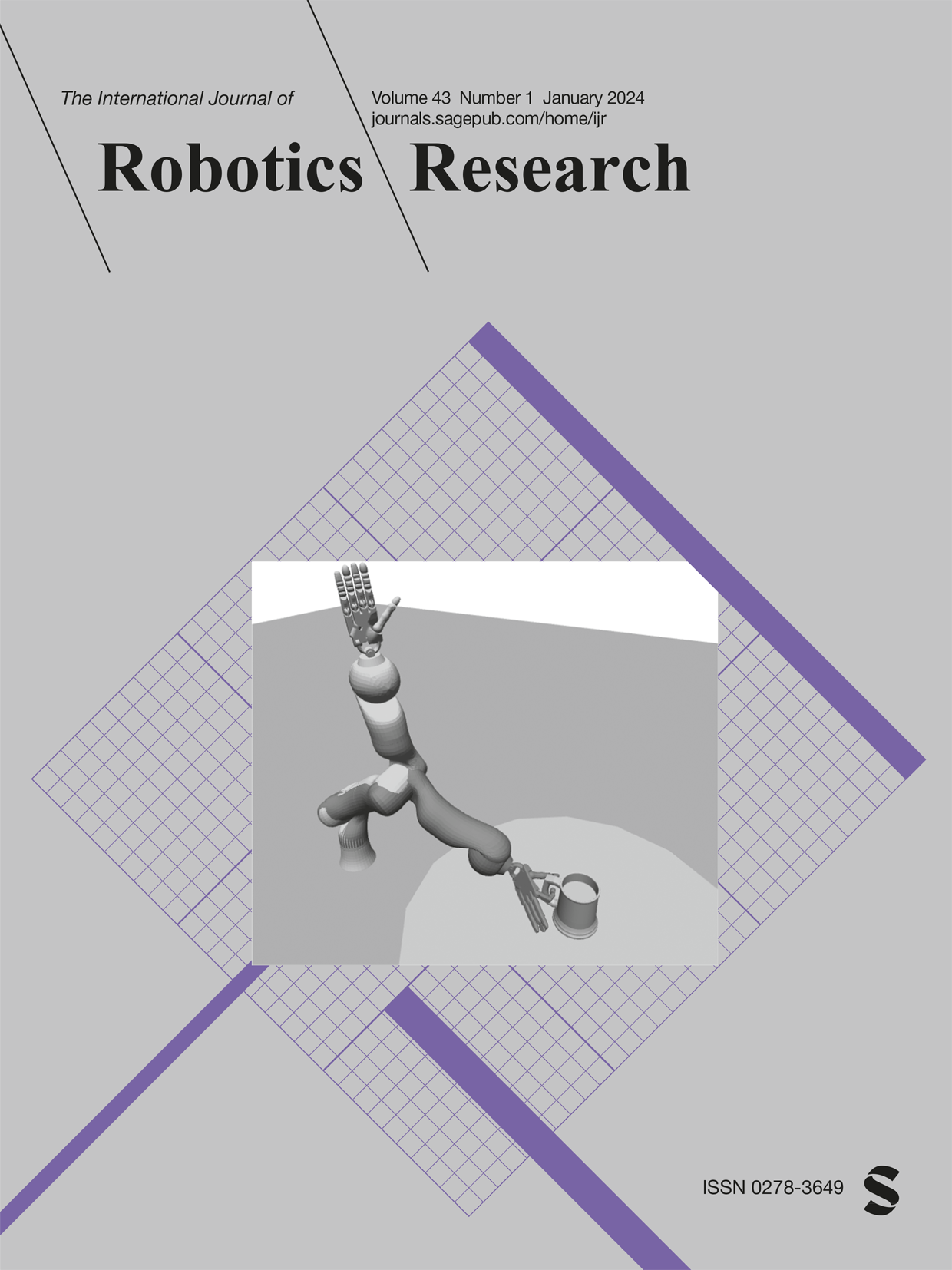混合稀疏单目视觉里程计与在线光度校准
IF 5
1区 计算机科学
Q1 ROBOTICS
引用次数: 4
摘要
大多数单眼视觉同步定位和映射(vSLAM)和视觉里程计(VO)算法都集中在基于特征的方法或直接方法上。混合(半直接)方法虽然同样重要,但研究较少。本文提出了一种用于单眼视觉的混合稀疏视觉里程计(HSO)算法。HSO引入了两种新方法,即采用自适应模式选择的直接图像对齐和使用比例因子的图像光度描述,以增强对剧烈图像强度变化和运动模糊的鲁棒性。此外,HSO能够通过使用局部全局亮度一致性增强的KLT跟踪在时间和空间上相距很远的关键帧之间建立姿态约束。采用候选地图点的收敛速度作为关键帧选择的依据,增强了前端和后端之间的协调性。光度计校准优雅地集成到VO系统中,协同工作:(1)来自相机的光度计干扰,如眩光和曝光时间的变化,在HSO中得到精确校准和补偿,从而提高了VO的精度和鲁棒性。(2)另一方面,VO为光度校正算法提供了预计算数据,减少了资源消耗,提高了光度参数的估计精度。在各种公共数据集上进行了广泛的实验,以评估所提出的HSO与最先进的单眼vSLAM/VO和在线光度校准方法的对比。结果表明,所提出的HSO在精度、鲁棒性和效率方面取得了优异的VO和光度校准性能,可与最先进的VO/vSLAM系统相媲美。我们开源HSO是为了社区的利益。本文章由计算机程序翻译,如有差异,请以英文原文为准。
Hybrid sparse monocular visual odometry with online photometric calibration
Most monocular visual Simultaneous Localization and Mapping (vSLAM) and visual odometry (VO) algorithms focus on either feature-based methods or direct methods. Hybrid (semi-direct) approach is less studied although it is equally important. In this paper, a hybrid sparse visual odometry (HSO) algorithm with online photometric calibration is proposed for monocular vision. HSO introduces two novel measures, that is, direct image alignment with adaptive mode selection and image photometric description using ratio factors, to enhance the robustness against dramatic image intensity changes and motion blur. Moreover, HSO is able to establish pose constraints between keyframes far apart in time and space by using KLT tracking enhanced with a local-global brightness consistency. The convergence speed of candidate map points is adopted as the basis for keyframe selection, which strengthens the coordination between the front end and the back end. Photometric calibration is elegantly integrated into the VO system working in tandem: (1) Photometric interference from the camera, such as vignetting and changes in exposure time, is accurately calibrated and compensated in HSO, thereby improving the accuracy and robustness of VO. (2) On the other hand, VO provides pre-calculated data for the photometric calibration algorithm, which reduces resource consumption and improves the estimation accuracy of photometric parameters. Extensive experiments are performed on various public datasets to evaluate the proposed HSO against the state-of-the-art monocular vSLAM/VO and online photometric calibration methods. The results show that the proposed HSO achieves superior performance on VO and photometric calibration in terms of accuracy, robustness, and efficiency, being comparable with the state-of-the-art VO/vSLAM systems. We open source HSO for the benefit of the community.
求助全文
通过发布文献求助,成功后即可免费获取论文全文。
去求助
来源期刊
CiteScore
22.20
自引率
0.00%
发文量
34
审稿时长
6-12 weeks
期刊介绍:
The International Journal of Robotics Research (IJRR) has been a leading peer-reviewed publication in the field for over two decades. It holds the distinction of being the first scholarly journal dedicated to robotics research.
IJRR presents cutting-edge and thought-provoking original research papers, articles, and reviews that delve into groundbreaking trends, technical advancements, and theoretical developments in robotics. Renowned scholars and practitioners contribute to its content, offering their expertise and insights. This journal covers a wide range of topics, going beyond narrow technical advancements to encompass various aspects of robotics.
The primary aim of IJRR is to publish work that has lasting value for the scientific and technological advancement of the field. Only original, robust, and practical research that can serve as a foundation for further progress is considered for publication. The focus is on producing content that will remain valuable and relevant over time.
In summary, IJRR stands as a prestigious publication that drives innovation and knowledge in robotics research.

 求助内容:
求助内容: 应助结果提醒方式:
应助结果提醒方式:


